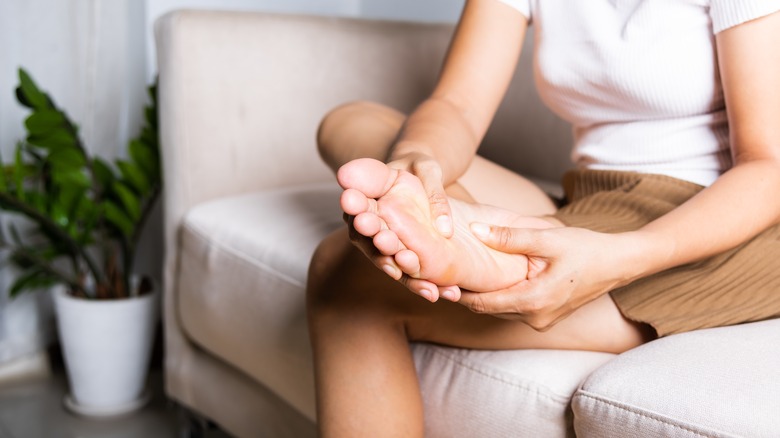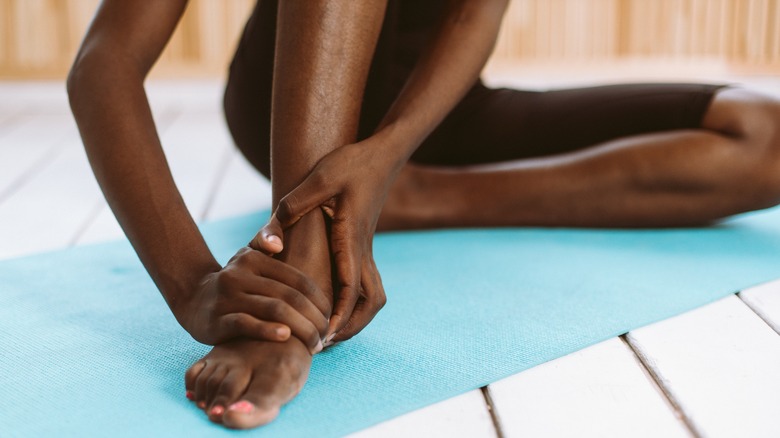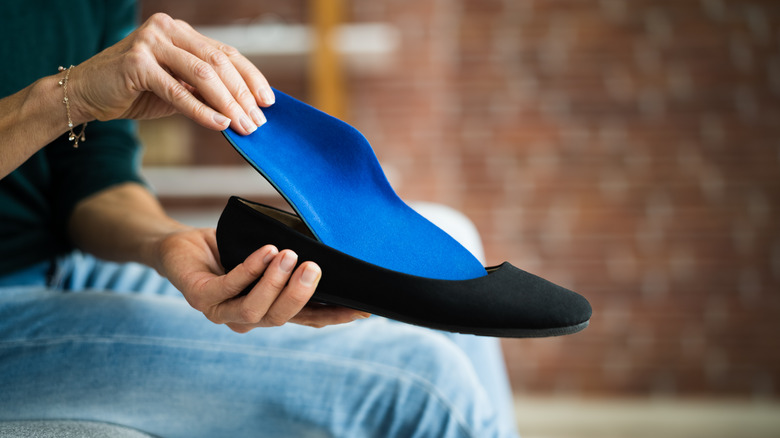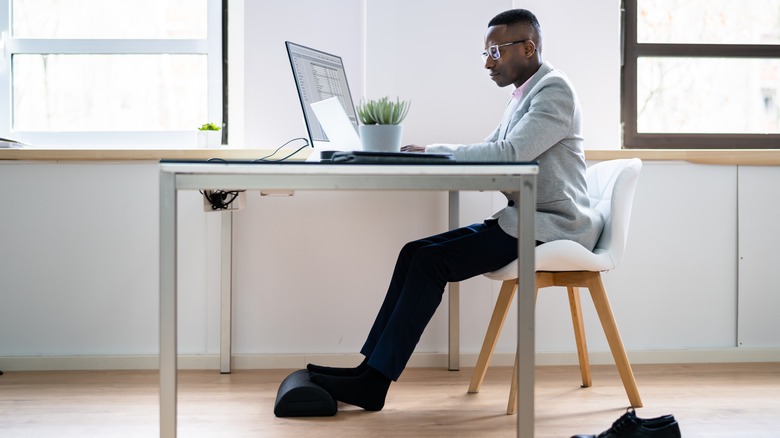4 Things A Podiatrist Says Can Help Prevent Pain From Flat Feet
When the arches of our feet fail to develop as they should in our youth, they can leave us with flat feet, according to the Mayo Clinic. Also sometimes the result of an injury or continuous everyday stress on our feet, some people experience pain related to having flat feet.
Mike Rushton, DPM has 13 years in private practice specializing in conservative care and orthotic therapy. He is the co-founder and Medical Director of Forward Motion Medical and JM Orthotics based in St. George, Utah, and has played a large part in bringing some of the newest and most exciting changes to the fields of biomechanics and orthotics across the country. Dr. Rushton has a registered patent on a foot related device and is recognized as an innovator in the podiatric profession. In an exclusive interview, Dr. Rushton spoke with Health Digest about what preventative measures one can take to stave off the pain or discomfort of flat feet.
The importance of stretching and proper footwear
Dr. Rushton's first tip is for individuals to engage in stretching exercises involving the feet, just as we would stretch any other area of the body. "Stretching exercises before and after physical activity can be helpful to prevent or alleviate pain caused by flat feet," he says. "By stretching the tendons and ligaments, it can improve the elasticity and counteract some of the negative effects of having pes planus (flat feet)."
Dr. Rushton goes on to tell Health Digest that the second thing people can do to prevent flat feet-related pain is to be mindful of what they're wearing on their feet. "Proper footwear is a must!" he emphasizes. Specifically, individuals will want to stick with fitted shoes, rather than footwear that's too snug or too roomy, he says. "Wearing shoes that are too tight or flat soles for example can cause pain as well as other pathologies like bunions to develop," Dr. Rushton explains. "Choose your shoe to fit your foot shape and don't try to shape your foot to fit an uncomfortable shoe."
Wear arch supports and purchase custom orthotics
"Arch supports or prefabricated orthotics can help provide some of the shock absorption and support that people with flat feet are lacking," Dr. Rushton explains, offering his third tip. "Feet with collapsing arches don't get that natural rebound that healthy feet have and this can cause strain to ligaments and muscles. Arch supports redistribute the pressure and put the arch back into a better shape," he says.
His fourth and final suggestion is for people with flat feet to invest in a pair of custom orthotics. "Custom Orthotics will realign and reposition the feet into their ideal position," Dr. Rushton states. "By properly aligning the heel and positioning the foot correctly, it can treat biomechanical abnormalities and pathologies." He goes on to explain what specific areas of the body custom orthotics help target. "Custom orthotics assist posture and increase stability up through the leg, hip and back for long-term benefits," Dr. Rushton states. "They treat the underlying problems and help people feel better while also preventing other problems [from] developing down the line."
Working these tips into your daily routine
When it comes to working these tips into your everyday life, Dr. Rushton states that it's all in the creation of healthy habits. "Daily stretching exercises can be implemented quite easily by combining it with other daily habits that are already in place," he says. "For example, when brushing teeth or watching TV," he suggests. "Some stretches can even be done from a sitting position at work or while eating. The main thing is to learn a few applicable exercises that can help, and [focus] on a foundation of good stretches."
"Footwear, Arch supports, and Custom orthotics are really about having the right equipment for your current activity level and lifestyle," Dr. Rushton goes on to tell Health Digest. "When first using arch supports and custom orthotics, there may be some discomfort at first while the body adjusts," he cautions. However, there are ways in which people can ease the discomfort associated with this transition period. "During this adjustment period, it can be helpful to limit the time the orthotics are worn at first and slowly increase the time as the body becomes accustomed," he says.
Concluding the interview, Dr. Rushton reiterates the importance of taking care of our feet in the same way we take care of the rest of our body. After all, Dr. Rushton states, "Feet are the foundation of the body!"




